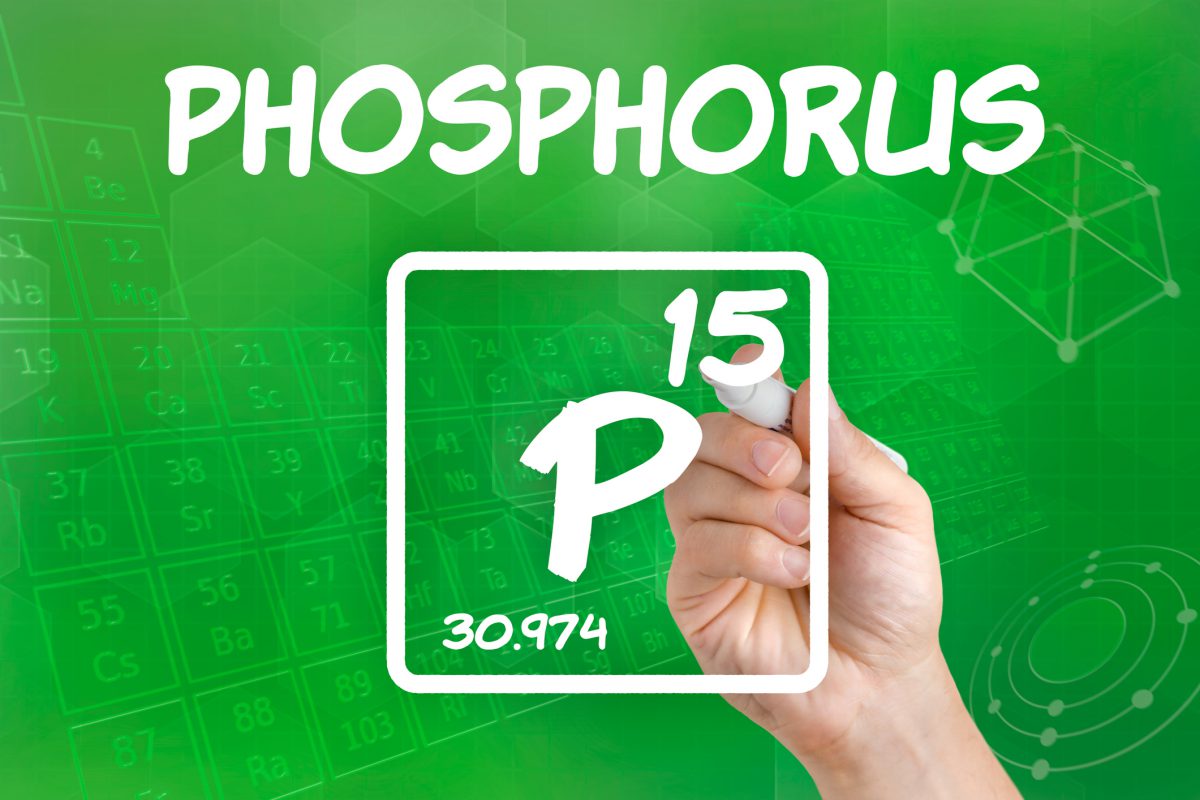The fish and plants that you keep in your aquarium and pond will have a significant effect on your water quality. One of the biggest chemical changes that occur is the accumulation of waste products. These may be in the form of toxic compounds such as ammonia, which must be converted into a non-toxic form or compounds such as phosphate, which can still cause other problems by encouraging the growth of unwanted algae.
What is phosphorus?
Phosphorus is a vital biochemical. It is not just found in your fish’s body but is also found in numerous other vital biochemicals.
One of the main inputs of phosphorus in your aquarium and pond is fish food. Artificial diets like flake and pellet foods have phosphorus concentration in the region of 1%, so after each feeding session, the amount of phosphorus cycling in the aquarium or pond will increase. The chemical is also excreted into the water from your fish as they metabolise. Another significant source of phosphorus into the water is the rupture of dead cells. Fish and plants will be constantly shedding dead cells and tissue into the water, where the cells will again rupture and release their contents.
Phosphorus in natural habitats
In the natural environment, sources of phosphorus are primarily the weathering of rocks and break down of sediments. These release phosphorus into the water and account for most of the global concentration. Other significant sources are agricultural fertilisers, animal manures and municipal sewage which find their way into river systems and the sea where it cycles between surface water and the seabed sediments.
Problems with phosphorus
Phosphorus will cycle through numerous forms in the water. Dissolved Inorganic Phosphorus (DIP) is the most abundant form and is also known as Orthophosphate, reactive phosphate and phosphate. Another form of phosphorus in water is Dissolved Organic Phosphorous (DOP), and this accounts for the phosphorus bound to organic compounds dissolved in the water. Finally, a significant proportion of the phosphorus will be bound to particulate matter in the detritus and sediment, and this is known as Particulate Organic Phosphorus (POP).
None of the forms of DIP, DOP or POP are directly toxic to fish. The problem with elevated levels of phosphate in aquarium or pond water is that it encourages algae growth. Phosphorus is required for plant growth, but excessive levels of phosphate can mean increased growth of plant life.
In lakes and rivers, the enrichment of the water with nutrients is termed ‘eutrophication’ and this can lead to a heavy growth of algae or aquatic plants. These nutrients are mainly nitrate and phosphate, with phosphate being the limiting factor in freshwater environments. In other words, it is the presence of phosphate that triggers the plant growth, and it is phosphate that most commonly runs out first.
Because phosphate is a limiting nutrient in freshwater environments, freshwater algae and plants (macrophytes) have evolved to be able to store phosphate inside their cells as Condensed Inorganic Polyphosphates. This enables the plant or algae to use the stored phosphate when levels of DIP in the water have dropped to growth limiting levels. This phosphate storage is known as ‘luxury consumption’ and may help to explain why controlling algae in ponds or an aquarium is so considerably difficult.
In marine environments, phosphorus levels tend to be more stable. The level in natural seawater is around 0.07 mg/L, with higher levels recorded inshore due to pollution and river inputs.
Consequently, nitrogen tends to be the limiting nutrient in marine environments and marine algae are not quite so thrifty with their phosphorus. Marine seaweeds are known to excrete DIP and DOP into the water. The level of phosphate in marine aquaria is generally far higher than natural seawater so marine algae such as Caulerpa may be adding to the overall phosphorus level as well as lowering it.
Control of phosphorus – getting rid and preventing accumulation
The inputs of phosphorus in a pond or aquarium are primarily fish, their food and plants. So surely the best way to keep phosphate levels down is to reduce the amount of fish, plants and food, but where is the fun in that!? The key to controlling phosphorus is to increase the outputs of phosphorus in the system so they are more balanced.
Freshwater aquariums and ponds where higher plant growth is encouraged should show a reduction in levels of DIP in the water as the plants assimilate and grow. If the phosphorus demands of the higher plants leave a surplus DIP then algal growth can be expected. Another way phosphate can leave the water is through aeration. When water is aerated, orthophosphate becomes bound to dissolved organic compounds (DOC) in the water. This DOC is attracted to the surface with air bubbles and as these rise to the surface and burst, the orthophosphate leaves the water via minute airborne droplets of water known as an aerosol. One study showed how 90% of the orthophosphate was removed from a sample of seawater after 24 hours of aeration with an aquarium air pump.
Liquid additives can also be very effective at the removal of phosphates from aquarium water. Tetra PhosphateMinus can remove 2 mg/l of phosphate when used as instructed and will cause no water clouding, KH reduction or pose any threat to aquarium inhabitants.
Phosphate accumulation in fishkeeping systems is inevitable and significantly increases the risk of troublesome algae growth. It should be tackled on numerous fronts, such as limiting inputs through sensible feeding regimes of quality fish foods and using phosphate removers. Higher plant or macroalgae growth will also help lock up phosphate out of reach of the algae.

